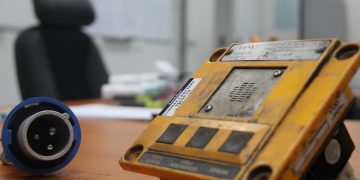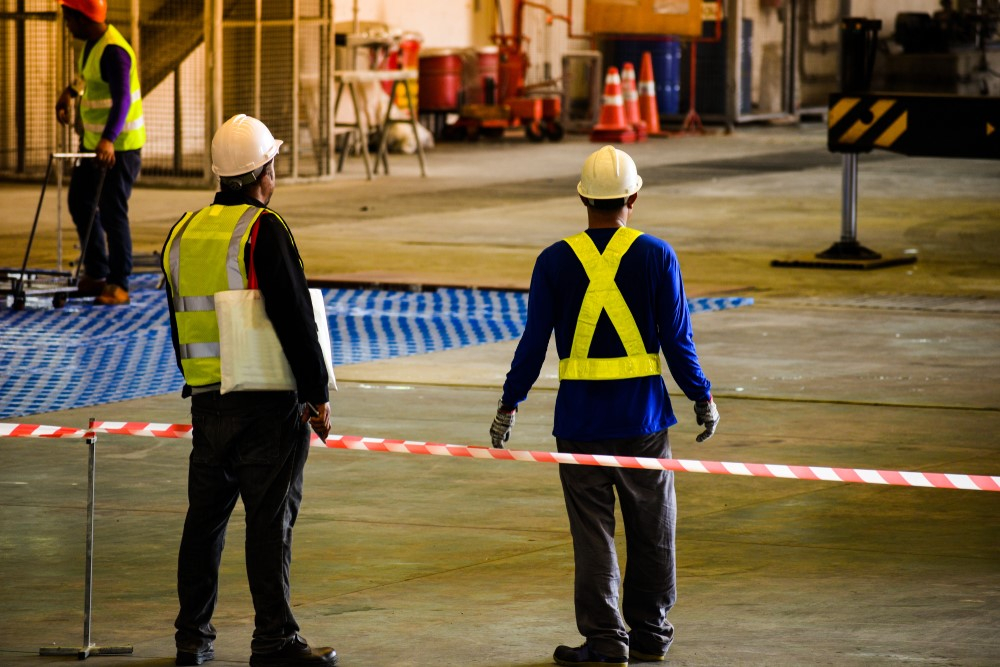Little Known Facts About Roar Solutions.
Little Known Facts About Roar Solutions.
Blog Article
Top Guidelines Of Roar Solutions
Table of ContentsThe 45-Second Trick For Roar SolutionsAbout Roar SolutionsThe Facts About Roar Solutions Revealed
In such an atmosphere a fire or explosion is feasible when three basic conditions are satisfied. This is frequently described as the "dangerous location" or "combustion" triangle. In order to safeguard installations from a potential explosion an approach of evaluating and identifying a potentially unsafe area is required. The objective of this is to make certain the right option and setup of tools to eventually avoid an explosion and to make certain security of life.
(https://www.abnewswire.com/companyname/training.roarsolution.com.au_152691.html#detail-tab)
No devices must be mounted where the surface area temperature level of the tools is higher than the ignition temperature of the provided hazard. Below are some common dirt harmful and their minimal ignition temperature. Coal Dust 380C 225C Polythene 420C (melts) Methyl Cellulose 420C 320C Starch 460C 435C Flour 490C 340C Sugar 490C 460C Grain Dust 510C 300C Phenolic Material 530C > 450C Aluminium 590C > 450C PVC 700C > 450C Residue 810C 570C The possibility of the danger existing in a concentration high sufficient to create an ignition will certainly differ from area to place.
In order to categorize this danger a setup is divided right into areas of risk relying on the quantity of time the dangerous is existing. These areas are described as Areas. For gases and vapours and dusts and fibres there are 3 areas. Area 0 Area 20 A dangerous ambience is highly likely to be existing and might exist for long periods of time (> 1000 hours annually) or perhaps continuously Area 1 Area 21 An unsafe atmosphere is feasible yet unlikely to be existing for long durations of time (> 10 450 C [842 F] A category of T6 suggests the minimal ignition temperature level is > 85 C [185 F] Dangerous area electric tools possibly developed for use in greater ambient temperature levels. This would certainly suggested on the rating plate e.g. EExe II C T3 Ta + 60C( This indicates at 60C ambient T3 will not be surpassed) T1 T1, T2, T3, T4, T5, T6 T2 T2, T3, T4, T5, T6 T3 T3, T4, T5, T6 T4 T4, T5, T6 T5 T5, T6 T6 T6 A T Course score of T1 suggests the optimum surface temperature generated by the tool at 40 C is 450 C. Presuming the associated T Class and Temperature ranking for the tools are proper for the location, you can constantly make use of a tool with a much more strict Department score than required for the area. There isn't a clear solution to this inquiry unfortunately. It actually does depend on the sort of tools and what repair work require to be performed. Equipment with particular examination treatments that can't be done in the field in order to achieve/maintain 3rd party rating. Need to return to the manufacturing facility if it is before the devices's solution. Area Fixing By read this Authorised Personnel: Challenging screening may not be called for however specific treatments may need to be adhered to in order for the equipment to preserve its third event ranking. Authorised personnel have to be used to do the job appropriately Repair work should be a like for like substitute. New part should be considered as a direct replacement calling for no special testing of the devices after the fixing is full. Each piece of equipment with a dangerous score need to be evaluated independently. These are outlined at a high degree listed below, but for more detailed information, please refer straight to the standards.
Some Ideas on Roar Solutions You Should Know
The devices register is a comprehensive database of tools documents that includes a minimum set of fields to identify each item's place, technical parameters, Ex category, age, and environmental data. The ratio of Comprehensive to Shut assessments will be identified by the Devices Danger, which is analyzed based on ignition risk (the likelihood of a source of ignition versus the possibility of a flammable ambience )and the hazardous area category
( Zone 0, 1, or 2). Implementing a robust Risk-Based Examination( RBI )method is crucial for making certain compliance and safety and security in managing Electric Devices in Hazardous Locations( EEHA).
4 Easy Facts About Roar Solutions Shown

In regards to eruptive danger, an unsafe location is a setting in which an eruptive atmosphere exists (or might be anticipated to be present) in amounts that call for unique preventative measures for the building, installment and usage of tools. eeha courses. In this write-up we explore the obstacles dealt with in the workplace, the danger control procedures, and the required proficiencies to function safely
These substances can, in specific conditions, create explosive atmospheres and these can have significant and heartbreaking repercussions. Many of us are acquainted with the fire triangular eliminate any kind of one of the 3 components and the fire can not occur, however what does this mean in the context of hazardous locations?
In the majority of instances, we can do little regarding the levels of oxygen airborne, but we can have considerable impact on resources of ignition, as an example electric equipment. Dangerous areas are documented on the hazardous area category drawing and are recognized on-site by the triangular "EX" indicator. Here, among various other crucial information, areas are divided right into three types relying on the risk, the probability and duration that an explosive atmosphere will exist; Zone 0 or 20 is regarded one of the most harmful and Zone 2 or 22 is considered the least.
Report this page